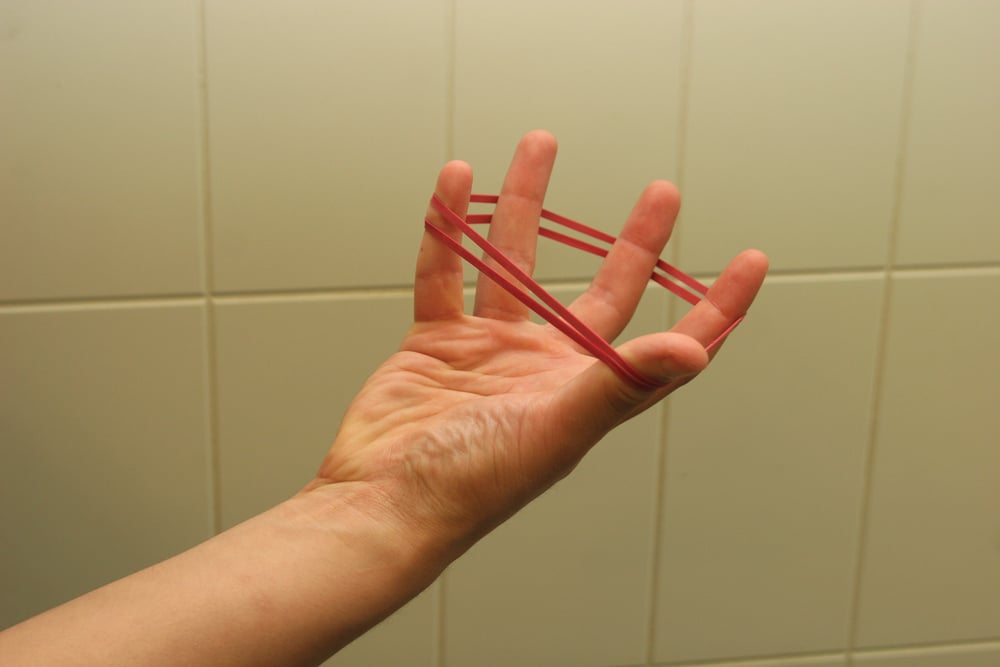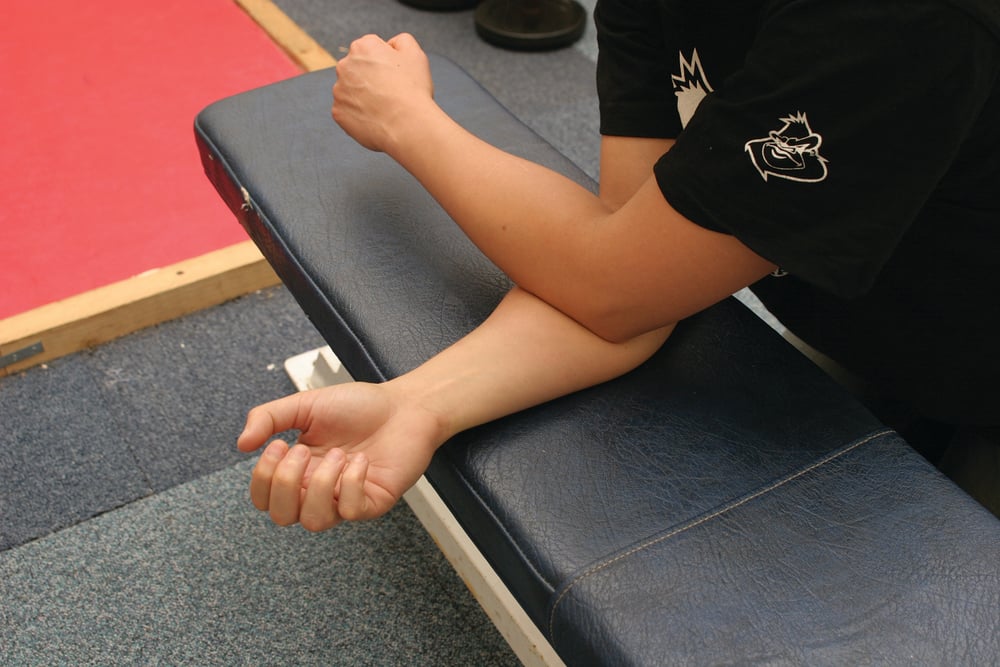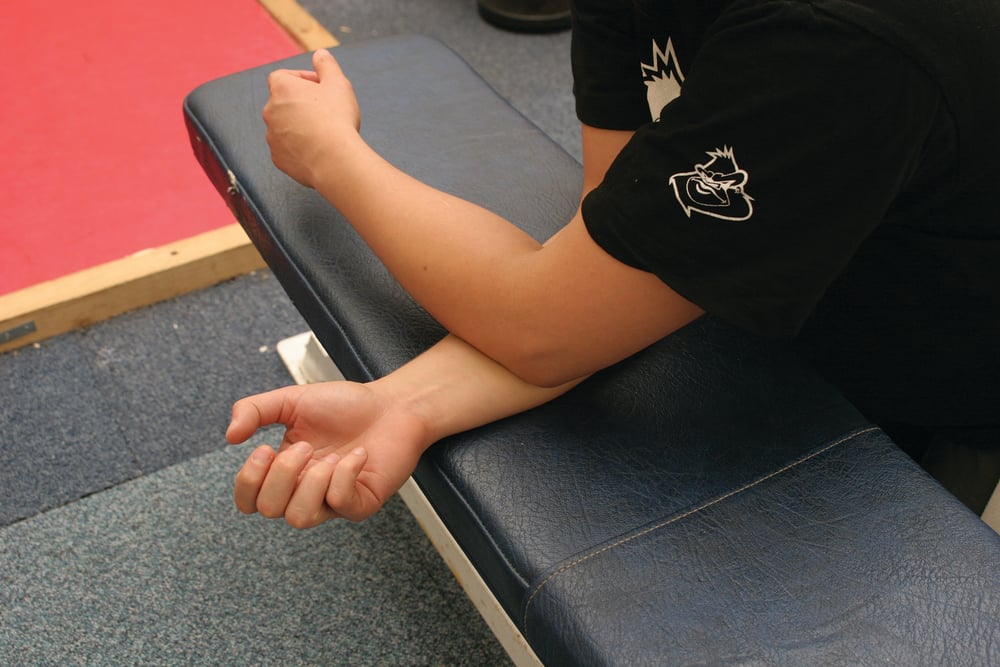
Issue 043
November 2008
The wrist is a very common problem area for those who train MMA. It is a joint that we put under a lot of stress on a daily basis. It is subject to repeated pushing and pulling forces that, over the long-term, can lead to chronic pain and injury.
For example, there’s the wear and tear on the small wrist bones that comes from regularly punching the heavy bag or focus pads. Then there’s the strain we put on the tendons crossing the wrist joint, which can become inflamed from overuse with grip work and strength training. In addition, wrist pain can often be caused by problems at the elbow, shoulder or neck.
The wrist itself contains eight small bones, known collectively as the carpal bones. These are sandwiched between the two long forearm bones (the radius and the ulna) and the metacarpals of the hand itself.
It is important to get a professional assessment of a wrist injury. There are certain injuries that, if untreated, can lead to long-term pain and possibly permanent loss of strength and mobility in the wrist. On a more positive note, some painful injuries can be treated surprisingly easily by a physiotherapist or osteopath.
Grip strength and wrist strength tend to go hand in hand, as many of the muscles that move your fingers also cross the wrist joint. There are many ideas about how to strengthen the wrist, and plenty of gadgets available for working on your grip strength. Many of these are excellent but if not used in the correct way as part of an overall programme can leave you with muscle imbalances. This happens when certain muscle groups become stronger and tighter, while others lengthen and become weaker. Not only will this affect your flexibility and range of movement, but it can also leave you more prone to injury.
In this article, we’re going to focus on a few things you can do to prevent some of these problems arising. Many wrist problems arise from overuse – the tendons of the wrist have a tendency to become inflamed when they are stressed too much or too often. This can be caused or exacerbated by keyboard work – so if you spend much time at a computer, check that you are using it correctly and that your posture is good. If you work at a desk as part of your job, your employers should be able to provide you with an occupational health assessment of your workstation. This is definitely worthwhile, as even a few small changes in your posture can help to prevent many common neck, back and arm problems that could interfere with your training. Another simple way to take care of your wrists is to ensure that you wrap your hands when you are punching pads or a heavy bag.
If you are already suffering from wrist pain, then speak to your doctor, physiotherapist or other sports-injury professional before doing these exercises. If any of the exercises causes you pain, then stop immediately and seek professional advice.
Train your extensor muscles
Grip work very often focuses on the flexor muscles of the fingers – the ones you use to close your fingers round something. The opposite muscles - the extensors - often get neglected. The good news is that by training the extensor muscles, you not only reduce your risk of injuries such as tendonitis, but it may even help to improve the strength of your grip.
Band training
The simplest way to train your finger extensors is to use some thick rubber bands.
1) Bunch your fingers together, and wrap the rubber bands around the fingers.
2) Open your fingers out against the resistance of the bands.
Isometric jar hold
Another exercise to try is to place your hand in a large jar, and open your fingers outwards so they are pressing on the inside of the jar, and lift it. Hold the jar like this for 20 seconds.
If this is too easy, add weights or water to the jar until it becomes a challenge. Make sure that the jar is not too high up when it falls!
Always wanted to know...
How to reduce the risk of injury?
Many factors play a role in the risk of incurring joint injury via MMA training. Factors include: Individual biomechanics, weak muscles, muscle imbalances and so on. One thing that ties into all of these areas is an individual’s recovery.
Tired muscles do a poor job of protecting their associated connective tissues, increasing the risk of injury to bones, cartilage, tendons and ligaments. So if you have clocked up a serious amount of gym time over a relatively short period. without sufficient recovery you are more likely to suffer an injury than if you had been paying proper attention to you full physical repair. The more days you train consecutively, the higher your risk of injury becomes.
Top tips to avoid picking up those unwanted injuries:
1) Avoid training when tired – listen to your body!
2) Increase carbohydrate intake during periods of heavy training load
3) Treat minor injuries carefully to avoid them becoming major
4) If it hurts when training – STOP!
5) Maximise your recovery between sessions by keeping protein and antioxidant intake high
6) Get plenty of sleep!
Dave Cullen Cherry Active
www.cherryactive.co.uk/sport
Self-massage for the forearm flexors
We talked about stretching the forearm flexors last issue when we discussed elbows, and this is also important for the health of your wrists. Another thing that can help to keep your forearm muscles in good shape is regular self-massage. This helps to improve circulation to these muscles, remove waste products and break down ‘knots’ in the muscle tissue.
1) Place the forearm palm upwards on a table, and use the opposite arm to apply pressure.
2) Start slightly below the crease of the elbow. With the blade of the opposite arm, press down across the forearm. While holding this pressure, slowly open the fingers of the arm you are working on. Relax, then repeat three or four times.
3) Move the pressure slightly down the arm and repeat the process until you get to the wrist. It should become gradually harder to open the fingers as you work further down the forearm.
...














